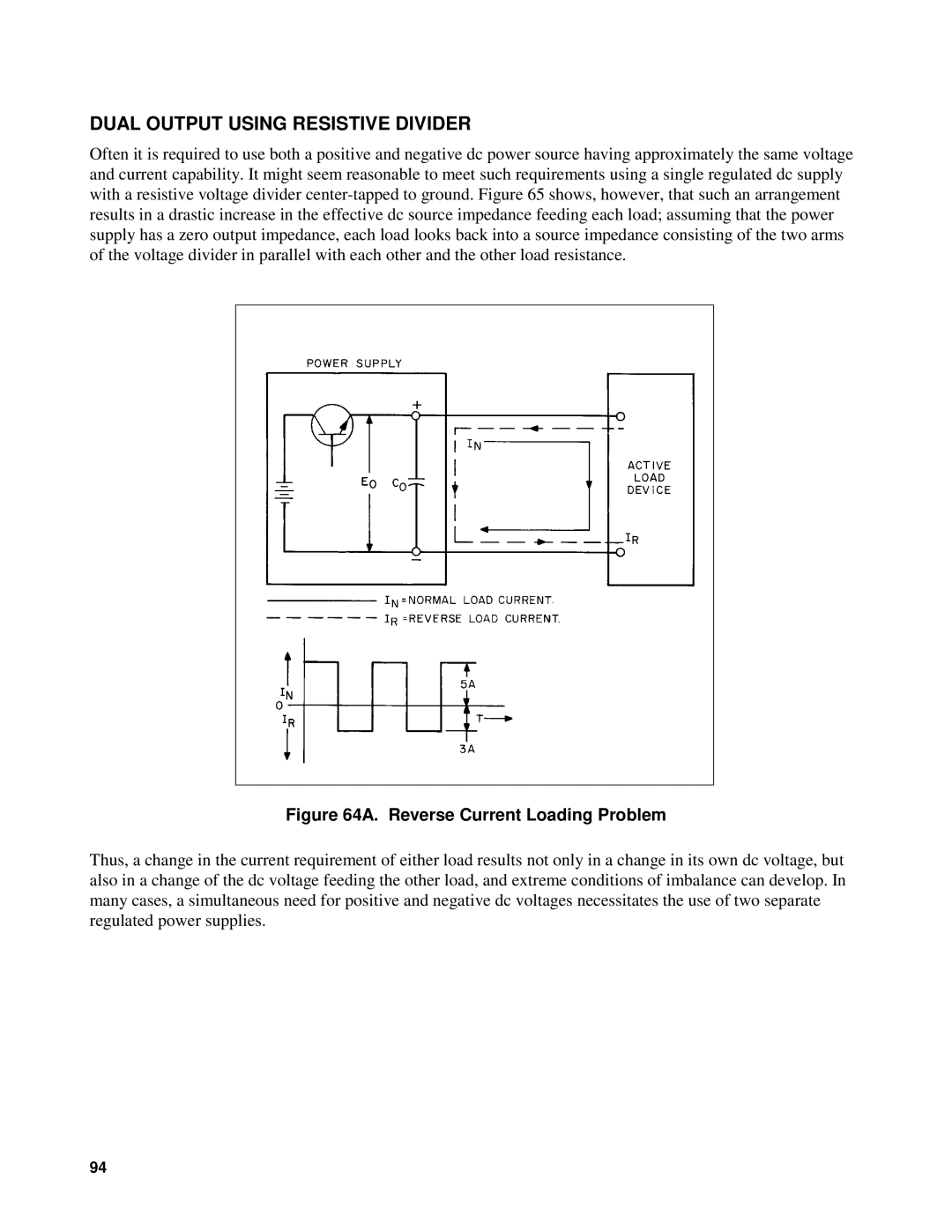
DUAL OUTPUT USING RESISTIVE DIVIDER
Often it is required to use both a positive and negative dc power source having approximately the same voltage and current capability. It might seem reasonable to meet such requirements using a single regulated dc supply with a resistive voltage divider
Figure 64A. Reverse Current Loading Problem
Thus, a change in the current requirement of either load results not only in a change in its own dc voltage, but also in a change of the dc voltage feeding the other load, and extreme conditions of imbalance can develop. In many cases, a simultaneous need for positive and negative dc voltages necessitates the use of two separate regulated power supplies.
94
